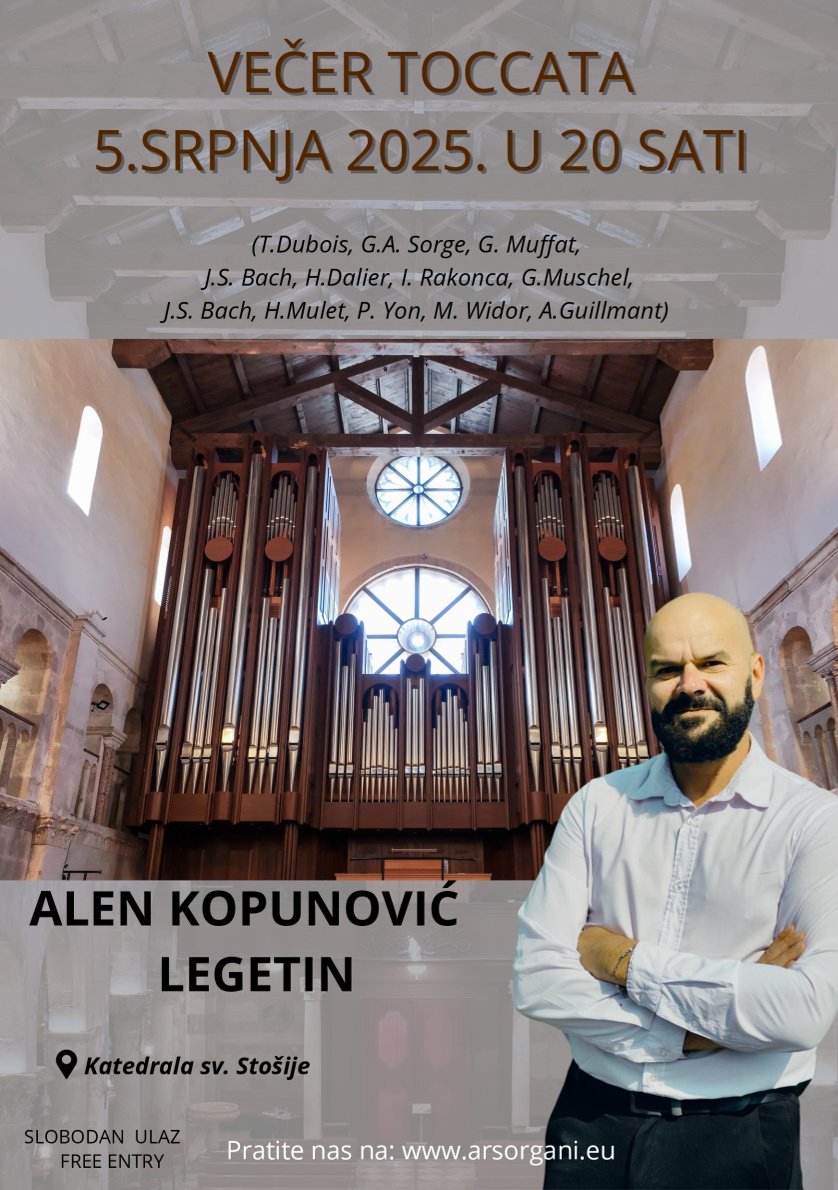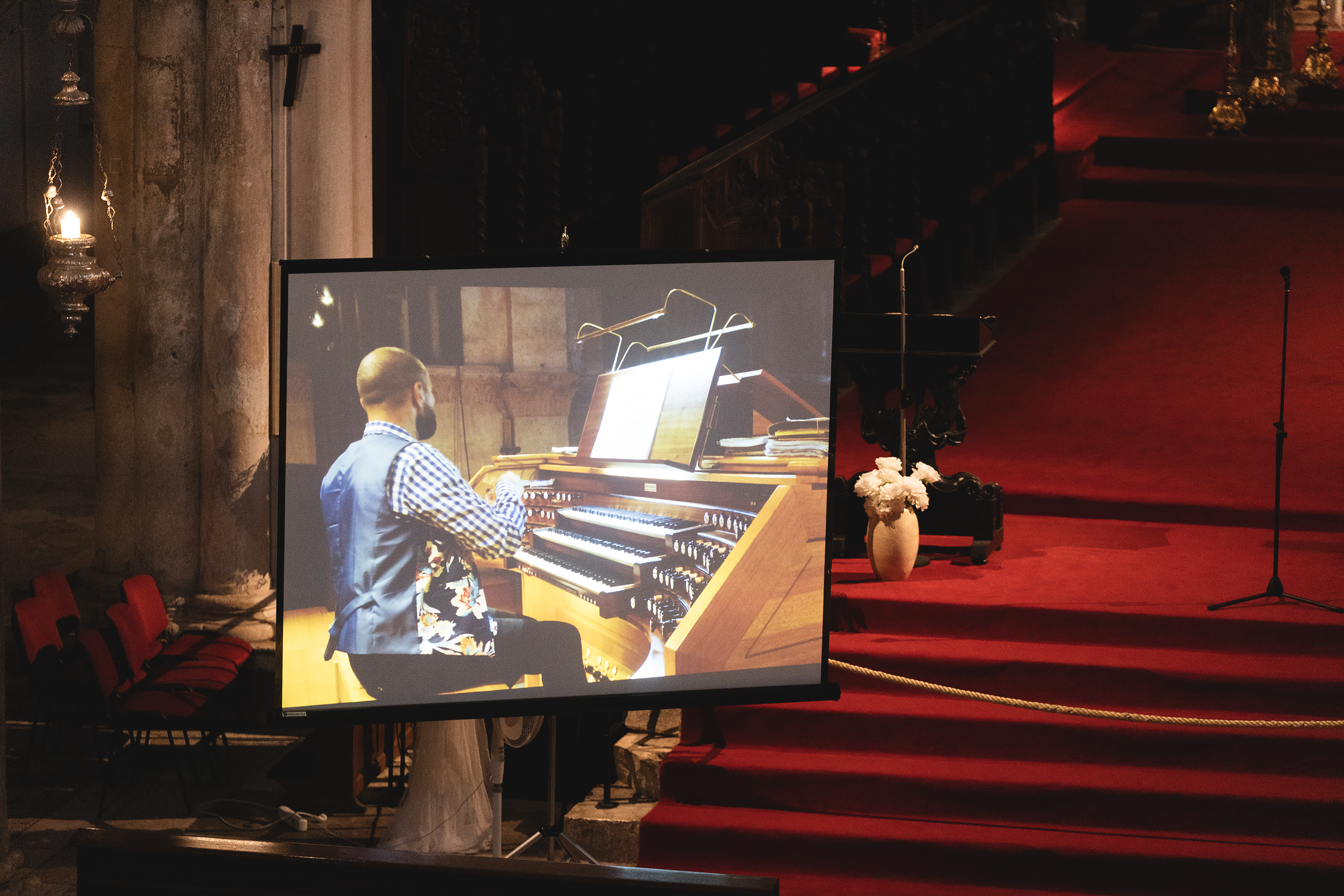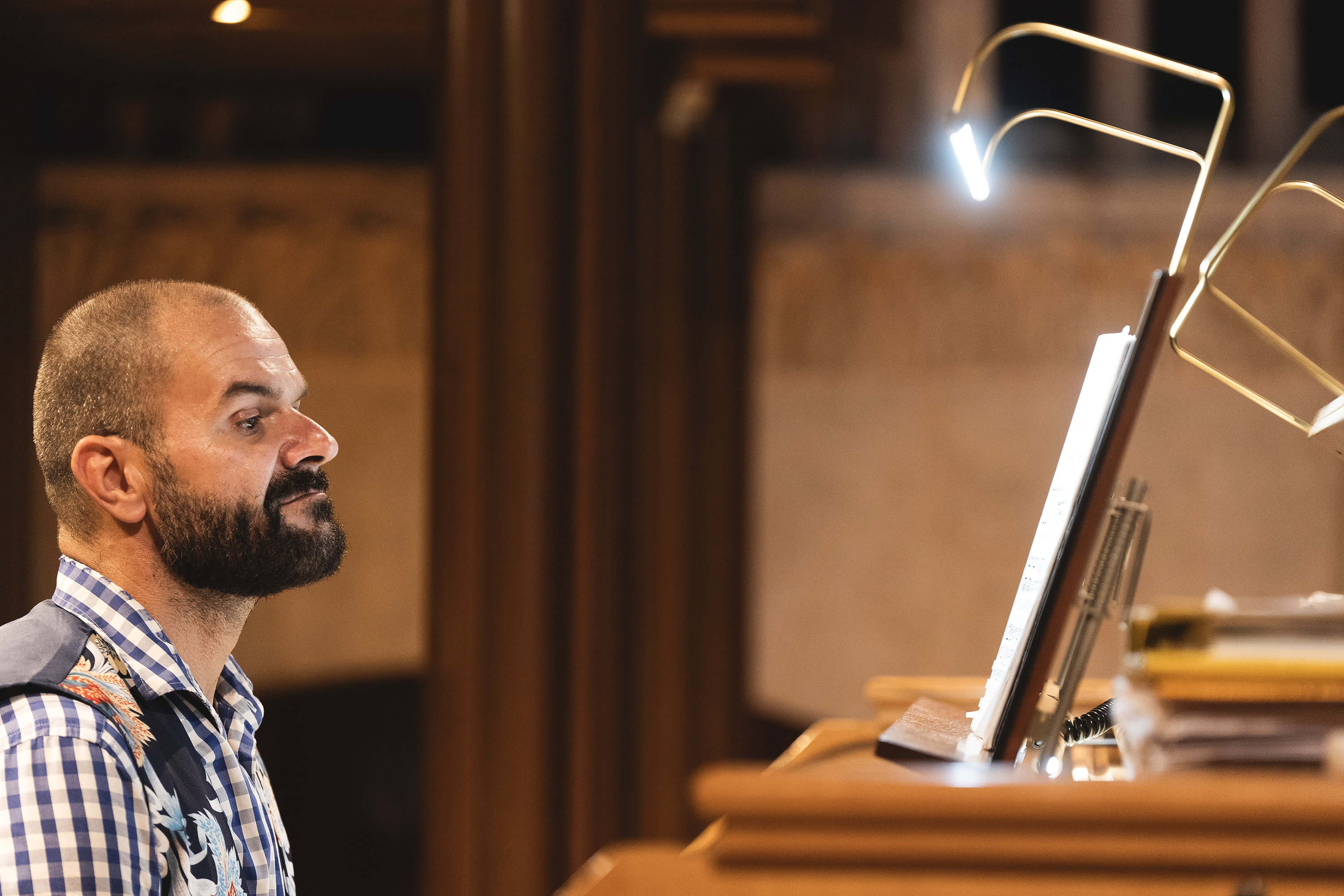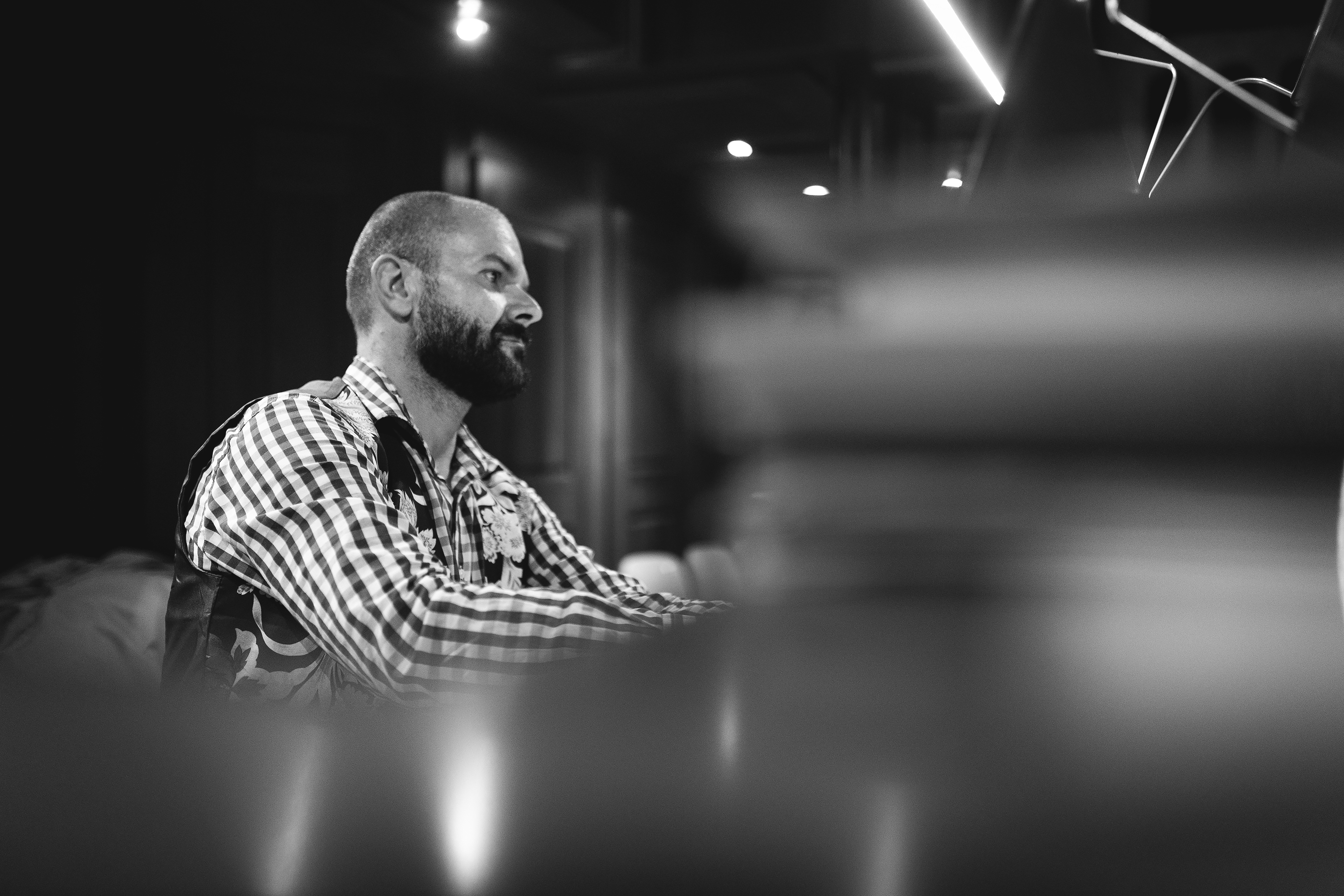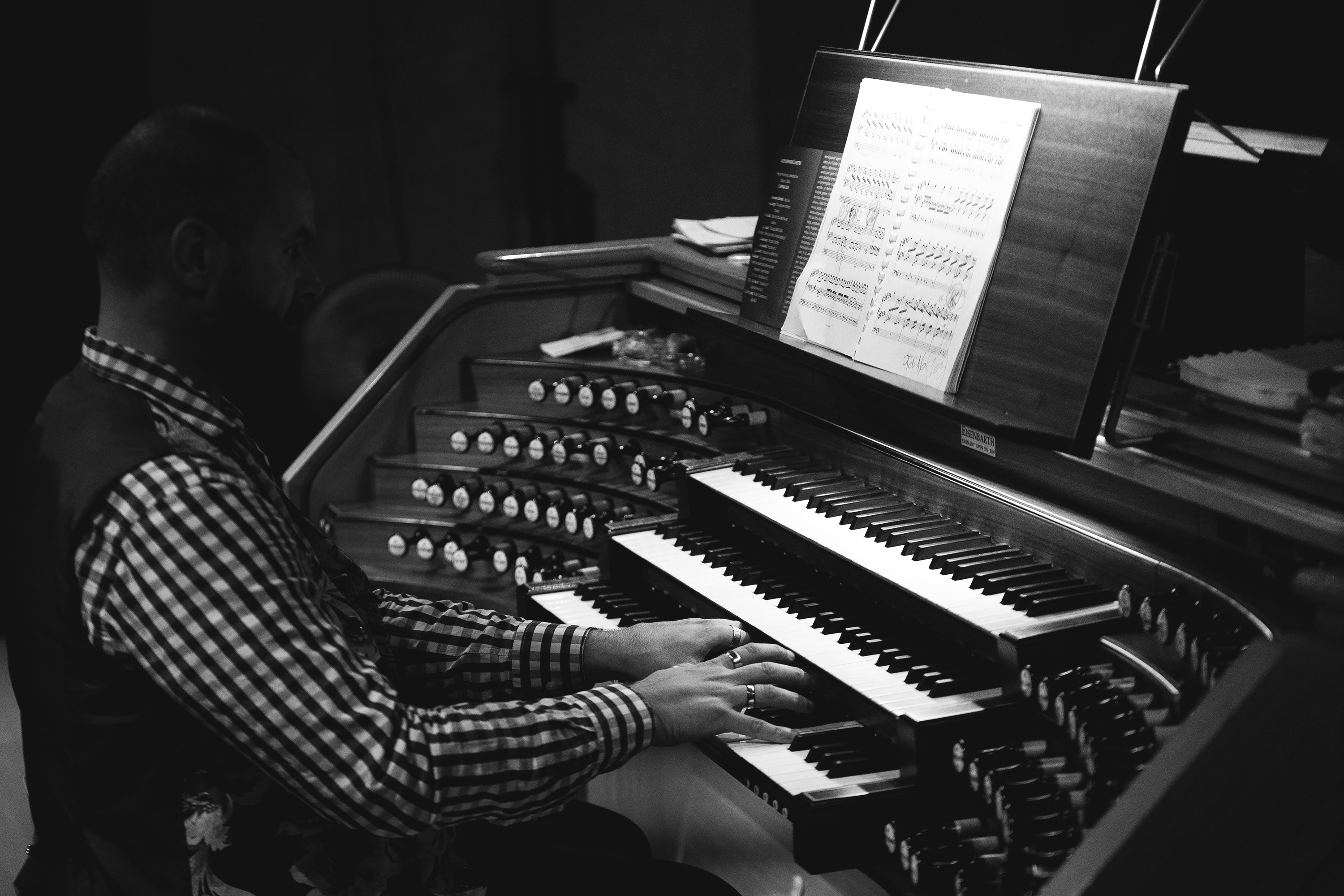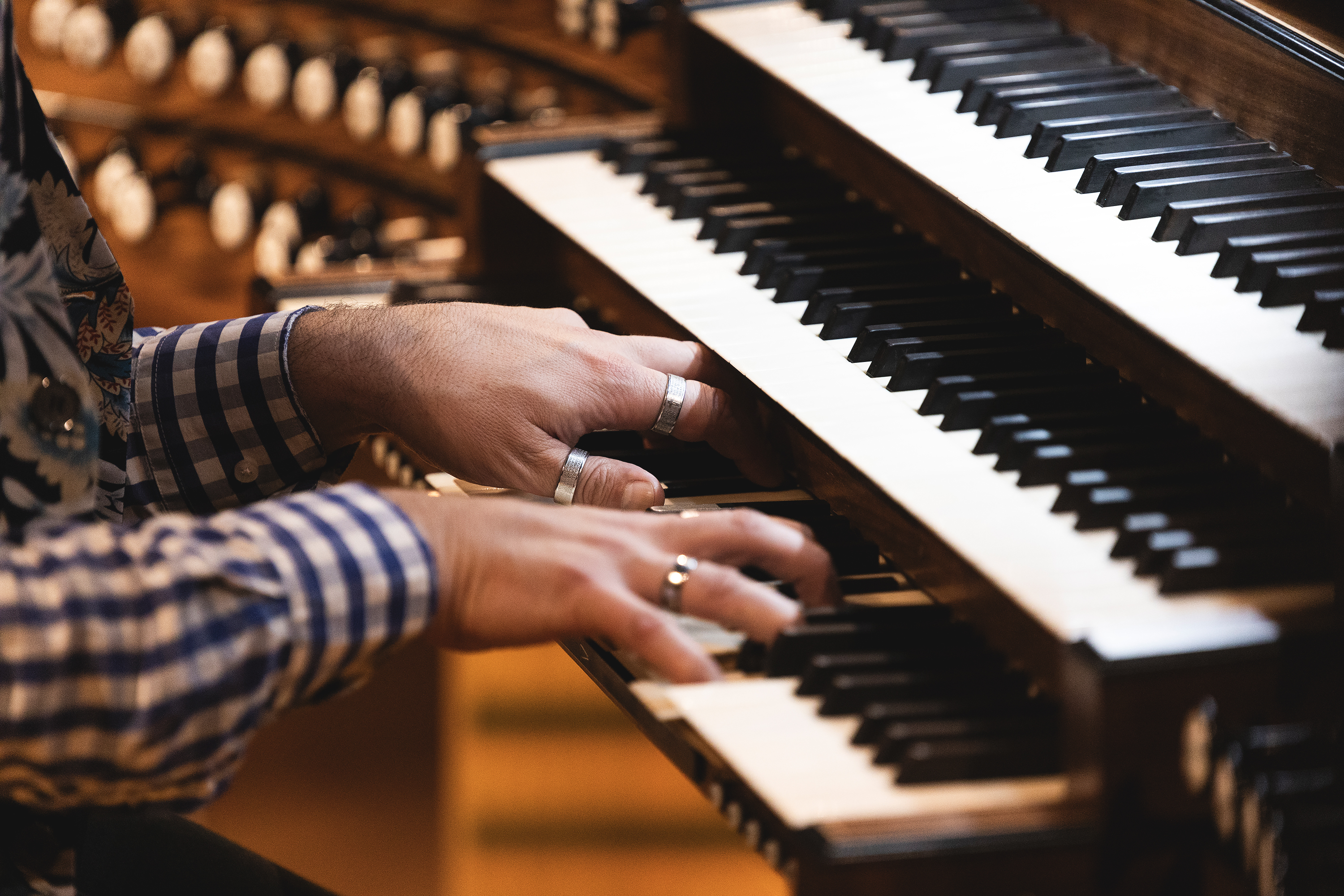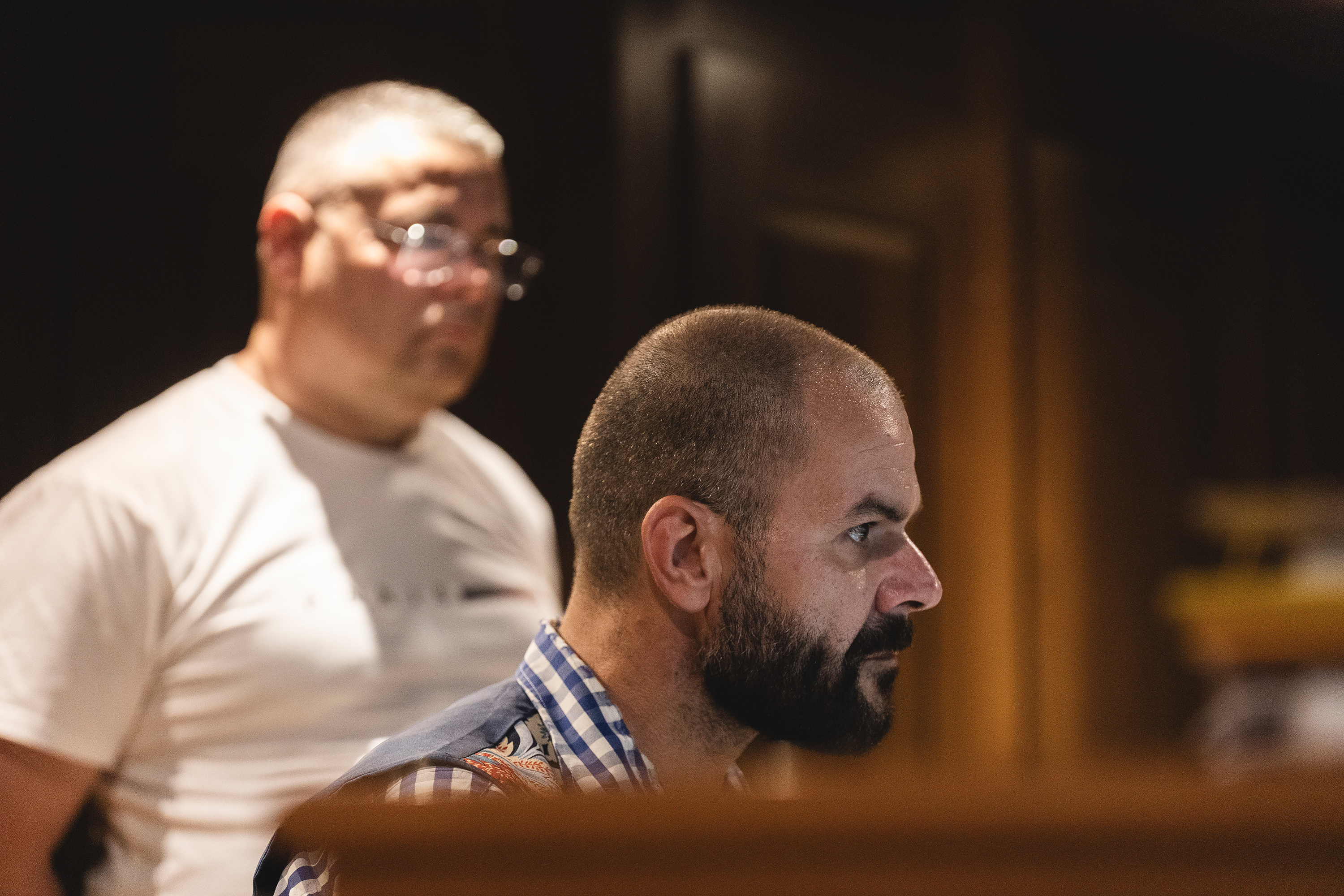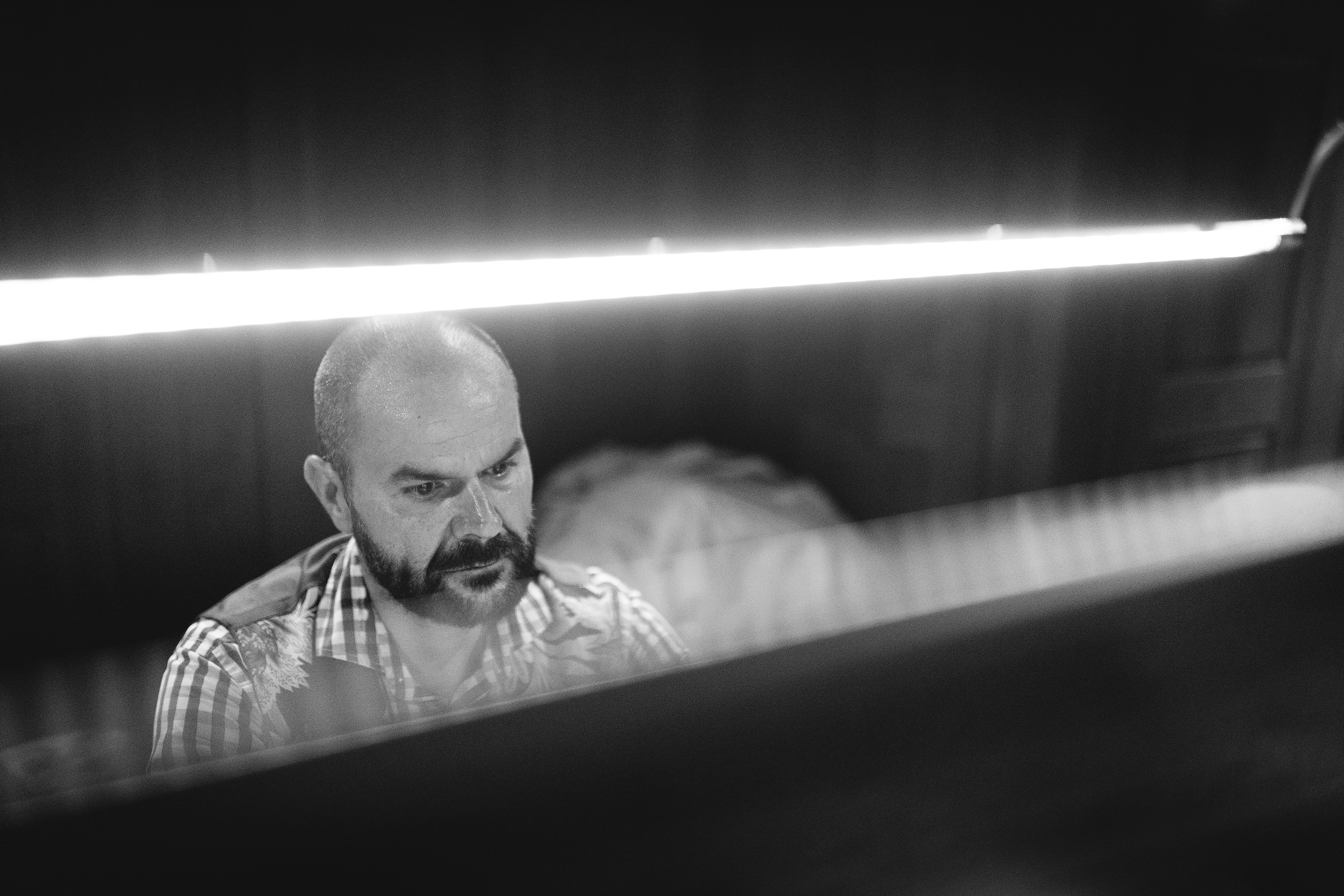ALEN KOPUNOVIĆ LEGETIN - TOCCATA EVENING AT ST. ANASTASIA CATHEDRAL 5. 7. 2025.
05.07.2025

Alen Kopunović Legetin performed a solo concert in the Cathedral of St. Anastasia on July 5, 2025 at 8 p.m. In his performance this summer evening, the cathedral resounded with the sounds of 12 toccatas to which the entire concert was dedicated. It was the sixth concert in a row as part of the second "Organ of St. Anastasia" festival.
https://www.youtube.com/user/amsterdamcic
He received his primary and secondary music education in Subotica (he graduated from the theory and piano departments), and graduated in 1997 from the Academy of Music in Zagreb, in the class of Prof. Ljerka Očić. During his studies, he was the permanent organist of the Boys' Seminary Church in Šalata and the organist of the Church of St. Mark in the Upper Town in Zagreb. During his studies, he was awarded the Rector's Award of the University of Zagreb. In the academic year 1998/1999, he studied at the famous Mozarteum University in Salzburg, in the class of Prof. Elisabeth Ullmann, and in 2004/2005 at the Pontifical Institute for Church Music in Rome, majoring in liturgical music, with Maestro Valentin Miserachs, and organ with Maestro Fr. Theo Flury. From 1999 to 2016, he worked as an organist and choirmaster at the Church of St. Lawrence in Požega, pontifical choirmaster and organist at the cathedral, artistic director of the Požega Organ Evenings and conductor of the HKUD Vijenac Požega. From February 2017 to September 2020, he was organist and choirmaster at the parish of Blagovijesti – Naveztenja Gospodinova in Zagreb. He is an organist and choirmaster at the parish of St. Maximilian Kolbe on Bijenik in Zagreb. He often performs as a soloist or with the orchestras Zadar Chamber Orchestra and HV Orchestra, HRT Orchestra, Varaždin Chamber Orchestra, Dubrovnik Symphony Orchestra.
He has participated in numerous festivals: Organ concert in the Black Church of Brasov - Romania, he performed in Spain at the International Organ Festival in Madrid, Zagreb Summer Festival, Musical Evenings in St. Donatus, Rab Evenings, Varaždin Baroque Evenings, Požega Organ Evenings, Osor Musical Evenings, Makarska Cultural Summer, St. Mark's Festival, the Heferer Organ concert series, Ars Organi Sisciae, Organum Histriae, Munich Cathedral, St. Stephen's and St. Matthias Basilicas in Budapest, Am Hof Church in Vienna, almost all Croatian cathedrals, Cathedrals in Kotor, Belgrade, Subotica, St. Peter's Basilica in Rome, in St David's Concert Hall in Wales.
He also performs as an accompanist and chamber musician with instrumentalists and vocal soloists, and has a successful collaboration with the male klapa Stine and Leggero, for which he arranges and composes. He also composes liturgical and spiritual music (masses, motets, psalms). He is the artistic director of the vocal-instrumental ensemble Capella Lignum of the Festival Ensemble of the Sancta Barbara Wooden Chapel Festival. He is a member of the Fiat lux trio with Josipa Lončar, soprano, and Dario Teskera, trumpeter. In collaboration with Davor Ljubić, he founded the Organ Duo VOLUNTAS - their program includes arrangements for 4 hands and 4 legs. He was a member of the jury of county and national organ competitions.
In 1998, he was awarded the Antuš Award in Subotica for promoting the culture of the Bačka Croats. In 2010, he was presented with the Annual Award of the City of Požega for his contribution to musical culture, and in 2013, he was awarded the charter of the Oratory Society of the Church of St. Mark in Zagreb, proclaiming him an honorary member.
His solo album Portret kraljice was released in 2011 by the record company Croatia Records. In 2020, the record company Aulos released the album Croatian Musical Baroque, a recording of a concert from the Varaždin Baroque Evenings where he performed as a harpsichordist and organist with our celebrated prima donna and artist Dunja Vejzović. He composes mostly liturgical music - motets, masses, psalms, litanies, and compositions for solo voice. A new solo album called Cantantibus Organis, which he recorded on the excellent organ of the Požega Cathedral of St. Teresa of Avila, was released in 2023 under the label of the record company Croatia Records. In 2024. He has released two albums on Nota Bene Records, the first with the male klapa "Leggero" which includes his original compositions for klapa and organ, and the second album entitled "Magnificat" he recorded with the male quartet "ADORE" and includes Croatian Marian compositions throughout the liturgical year. He is a member of the Croatian Society of Musicians.
The program of the concert performed by Alen Kopunović Legetin at the Cathedral of St. Anastasia:
1. Theodore Dubois: Fiat lux
2. G.A. Sorge: Toccata per omnes modos
3. G. Muffat: Toccata duodezima et ultima
4. J.S. Bach: Toccata BWV 564
5. H.Dalier: Electa ut sol (5 Invocations)
6. I. Rakonca: Toccata- Sortie
7. G.Muschel: Toccata in C
8. J.S. Bach: Toccata in e BWV 914
9. H.Mulet: Tu es petra et porte inferi non praevalebunt adversus te ( Esquises byzantines)
10. P. Yon: Toccatina in C
11. Ch. M. Widor: Toccata in F Symphonie no.5
12. A.Guillmant: Final ( Sonata no.1, op.42)
About tonight's program selection by musicologist and publicist Helena Novak Penga:
Numerous organ solo concerts, which are otherwise composed of different musical genres, usually end with a toccata – with the aim of achieving an effective sonic fireworks display, but also of demonstrating the soloist's virtuosity. Instead of the toccata being merely the highlight of such a concert program, tonight's concert is entirely shaped under the programmatic aegis of precisely this form.
Toccata is a fast, technically demanding, seemingly improvisational musical genre for keyboard instruments (organ, piano). However, this improvisational impression is retained only at first glance – because, although it originated from the prelude forms of the 15th century, the toccata takes on increasingly complex architectural features in subsequent periods. Thus, the works of Claudio Merullo (16th century) and Girolamo Frescobaldi (17th century) already introduce fugal sections, which in Dietrich Buxtehude (18th century) develops into forms in which up to three fugal passages appear. The peak of this development is reached in the toccatas of Johann Sebastian Bach, which are usually combined with a fugue. (It is his Toccata and Fugue in D minor, BWV 565, that is one of the most famous works of classical music literature, common in popular culture of the 20th and 21st centuries.)
Toccatas composed in the 19th and 20th centuries particularly emphasize virtuosity, using – within atonal, bi- and polytonal tonal systems – dense texture, polyrhythm, pronounced dynamic and register contrasts, and emotional tension. Therefore, to design a concert program composed exclusively of toccatas from different stylistic and historical periods means to set before the performer the requirement not only of superb technical preparation, but also of intellectual maturity, introspection, and composure as necessary prerequisites for a deeply considered and high-quality interpretation.
Tonight's program offers an intriguing balance of the virtuosic and the thoughtful, the well-known and the less well-known. Although not all compositions can be classified as toccata as a strictly defined musical genre (for example, the Finale from Guillemant's Sonata No. 1, Op. 42), the entire program is shaped by common internal patterns and fundamental principles of toccata musical structure – regardless of its historical phase.
The program often features titles from the repertoire of a concert organist: the monumental Toccata, Adagio and Fugue BWV 564 and Toccata BWV 914 by Johann Sebastian Bach, as well as brilliant French examples from the late 19th and early 20th centuries – the aforementioned Guilllmant Finale, then Théodore Dubois's Fiat lux, Henri Mulet's Tu es petra and Charles Widor's beloved Toccata. These representative opuses are interwoven with a series of lesser-known pearls of organ literature.
After Dubois's Fiat lux, examples of German Baroque toccatas from the 17th and 18th centuries follow: from Georg Muffat to Georg Andreas Sorge, who was probably on friendly terms with the Leipzig genius J. S. Bach. The French organ school is completed by Henri Dalier's Electa ut sol, while the Italian organ literature of the first half of the 20th century is represented by the Humoresque "L'organo primitivo" – Toccatina in C by Pietro Yon. A surprising place in the program is occupied by the Toccata by the Russian composer Georgij Muschel from the same period, while the Slavic segment of tonight's program is concluded by the only example of Croatian, but also contemporary organ literature – Toccata-Sortie by the young composer Ivan Rakonca. A departure from the usual organ programs represents its end: although most organists tend to end their concert with the tones of Widor's wonderful Toccata, Guillmant's Finale impressively rounds off the interpreter's ode to the toccata.
Structured in this way, tonight's concert becomes more than a collection of technically demanding pieces. In a blend of virtuosity and introspection, the toccata is revealed here not only as a form, but also as a musical space of personal expression and thoughtfulness. In the historic space of Zadar's Cathedral of St. Anastasia, the sound of its organ resonates as a living dialogue between the toccata, the instrument, the performer and the audience - at once sumptuous and introspective.
HELENA NOVAK PENGA
Thank you for coming!
